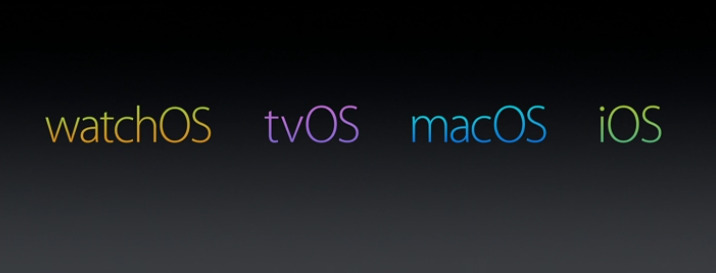The Day Apple Became One
Apple is the only company that owns a full set of smartphones, laptops, desktops, and wearables all running its own software. (Hi Windows Phone, you don't count.) There's always been a lingering question about how and when all those platforms would come together to create the Ultimate Apple Experience™, a perfect Jobsian singularity.
That's not happening quite yet, but after today's keynote, we have a much better idea what that will look like.
DON'T MISS: 13 best new features coming to the iPhone and iPad in iOS 10
Today's developer conference was, as is custom, divided up into sections addressing iOS, macOS and the like. But for the first time in Apple's history, those monikers didn't really apply. What we really saw was a new Siri, new Messages, new Music and new Photos.
Forget the fact that Messages was introduced as an iOS upgrade, or that Apple Pay for apps and web purchases was (weirdly) a watchOS thing. The important detail is that by and large, all these new features work seamlessly across different platforms. Forget whether you're having a conversation on an iPhone or a Macbook: the important thing is that it's happening within iMessage, and anyone using a device within Apple's ecosystem will be able to see and reply to those messages.
Cross-platform app compatibility — iOS apps working on macOS, and vice-versa — is often seen as the sign that platforms are "becoming one," like when Google announced Android apps coming to ChromeOS last month.
With Apple's system, that doesn't really matter.
Look at the new developer APIs released today: Siri plug-ins, Maps plug-ins, standalone Messaging apps. If you're OpenTable or Uber, these are better options than creating a standalone app for different operating systems. Why build a standalone reservations app, when you can get your service integrated right into the system-level features that users are already using?
Sure, there's plenty of caveats. All sorts of things will need to remain as standalone apps, for now at least. Evernote, WhatsApp, and Snapchat aren't going anywhere soon, and Photoshop for macOS won't be cropping photos from within Siri any time soon.
But that's fine. Certain apps never work across platforms anyway. Photoshop (or at least, how professionals use Photoshop) is best suited to a desktop environment for now, and sending snaps from a MacBook would probably just feel dumb. But for plenty of apps and services, using Siri, Maps, Messenger, Photos and the like will be the best way to reach users.
OS X becoming macOS might feel like a semantic naming thing, because it is. But it also heralds how Apple sees its software (and developers' apps!) reaching users for the next few years.
Is all this a good thing for users? Well, it probably depends how much you use Apple's services. If you're an iPhone user who communicates with WhatsApp, navigates with Waze and thinks that talking to your phone is dumb, none of this really matters. But if you're the prototypical user who only opens a handful of apps per month — and owns an Apple everything — your day-to-day life is about to get a little slicker.
